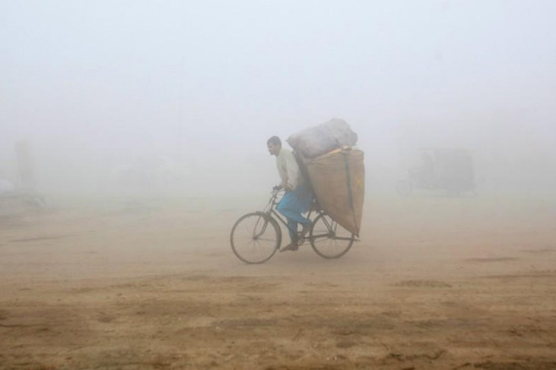Combating smog

Environmental issues have a snowball effect, and if not catered to in time they can be as devastating as an avalanche. Photo: Reuters
By Fatima Arif
While we were waiting for some respite from the heat, all set to welcoming the winters, we were blindsided by smog. The question is, did we really get blindsided by it or are we paying the price of ignoring the warning signs?
Human-made smog is a combined result of coal, vehicular and industrial emissions, as well as forest and agricultural fires and photochemical reactions of these emissions. Punjab is witnessing the havoc that smog is capable of creating since late October. Yesterday I read in The News that Dr Pervaiz Amir, an eminent environmentalist, speaking at an event in Karachi said: “In the days to come, Karachi may face extreme dust storms, devastating cyclones and hurricanes in the Arabian Sea as well as smog”.
This should be a wakeup call for anyone who thinks that this is an isolated provincial or regional issue that they can conveniently ignore. Environmental issues have a snowball effect, and if not catered to in time they can be as devastating as an avalanche.
If the smog situation worsens, the consequences will grow in their intensity as well, from mild eye and throat irritation, minor pains to severe pulmonary diseases and potential cancer risks. Individuals highly susceptible to these impacts include senior citizens, children and those with cardiac and respiratory complications as they have the tendency to be at a disadvantage of asthma.
In 2015 alone, almost 60,000 Pakistanis died from the high level of fine particulate matter (PM) in the air, making it among the highest death tolls in the world from air pollution according to the World Health Organisation (WHO). As South Asia’s most urbanised country, Pakistan contends with increasing challenges such as the increase in motor vehicles in cities. In the last decade, more than 11 million cars appeared on the roads in Pakistan’s most populous province, representing a growth of almost 30%, according to a report from the Punjab Environmental Protection Department (EPD).
Another cause for the current scenario is the polluting practice on agricultural land common in Pakistan’s Punjab, resulting in plumes of toxic smoke carried across the neighbourhoods of Lahore.
The WHO sets a standard safe PM 2.5 level (air pollutant) in a 24-hour period at 25 µg/m3, while the latest readings in Lahore are fluctuating between PM 450 and 500.
This was no blind side. We had it coming and we ignored the writing on the wall. Despite the current situation, not all is lost, if we only stop the blame game and get to work. What you can do is plant indigenous trees like shisham, neem, pipal, jaman, amaltas and sohanjna to name a few. These are species that will help clean the air, provide shade and habitat for our birds and be a source of nutrition.
Alarmingly, Lahore cut down more than 2,200 trees in the city in 2015 and the practice continues at a similar pace across the country, removing a natural carbon sink able to absorb some of the large quantities of carbon dioxide and fine particulate matter released into the air.
WWF-Pakistan has launched a plantation campaign, Tree-A-Thon, which you can also be a part of. The campaign is being led by the organisation’s Goodwill Ambassador, Khalid Malik, known as the voice of morning drives in the country. Someone who believes in initiatives that can be executed at an individual level, Malik sees this campaign as an opportunity for us to take preventive measures against present and looming environmental disasters.
“Why get to that stage where we are waiting for something to impact us so catastrophically. I believe that prevention is better than cure. A key solution to multiple environmental issues we face is to combat deforestation by planting indigenous trees. This is something that we can all do at an individual level. It will be our investment towards a better present and future.”
The author is a marketing professional currently working in the development sector, with an interest in sustainable development, digital media, story-telling and photography. She is the Lead Writer at My Voice Unheard and tweets at @FatimaArif

